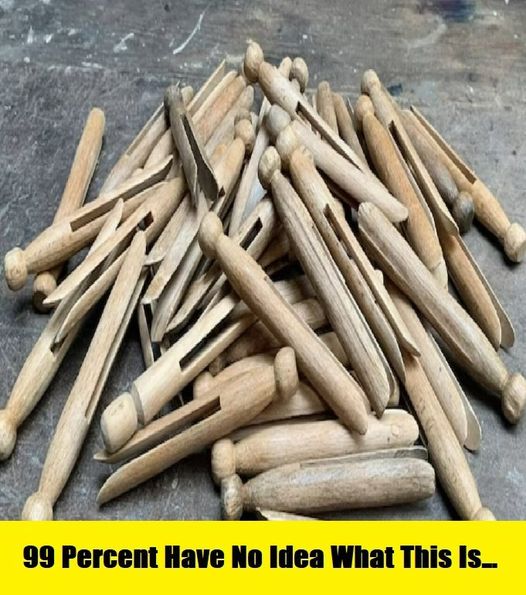Long before the age of technology and automatic dryers, people were inventive in creating tools to make household chores more manageable. One such tool, which has seen multiple transformations over the years, is the humble wooden clothespin—an essential device for drying laundry, especially on a windy day. This simple yet ingenious invention has an interesting history, from its early origins to its modern-day use.
The Mystery Behind the Wooden Dowels
Recently, an online user stumbled upon small wooden dowels with two legs and took to social media in search of answers. The post quickly sparked curiosity, as many users from an older generation immediately recognized the object: “Old school clothespins. We used them for hanging clean wet clothes outside on the clothesline to dry in the sun and fresh air!” The response stirred up a sense of nostalgia for boomers who grew up relying on these classic tools.
These wooden clothespins, also known as clothes pegs, are familiar household items designed for hanging wet laundry on a clothesline to dry. Today, clothespins are typically made of two wooden pieces hinged together at one end, with a spring mechanism that allows them to grip onto clothing tightly.
A Look Into the Ancient History of Clothespins
The origins of clothespins date back to ancient times, though the designs were far different from the modern-day versions we use today. Early clothespins were often hand-carved from materials such as wood, bone, or even stone, and sometimes featured decorative patterns or motifs. These early versions were rudimentary, serving the practical purpose of securing laundry while it dried.
.
The modern wooden clothespin, as we know it, came into existence in the 19th century. The need for an effective and convenient laundry tool led to the invention of a new design that would later become a household staple.
The Invention of the Modern Clothespin
The version of the clothespin we recognize today emerged from a patent filed by David M. Smith in Vermont in 1853. Smith’s design revolutionized the way clothespins were made and used. His patent described a two-piece pin hinged together by a wire, which allowed the longer legs of the clothespin to be squeezed together, causing the shorter legs to separate and form a clamp.
Smith’s design had a major advantage over the older, single-piece clothespins that were prone to being blown away by the wind. In his patent, Smith explained that his improved design would ensure the clothespin wouldn’t detach from the clothing, even in windy conditions, a common issue for washerwomen at the time.
Clothespins in the 19th and 20th Centuries
As industrialization progressed in the 19th and early 20th centuries, the production of wooden clothespins became more mechanized. Factories sprang up, allowing for mass production of standardized clothespins, which were now more affordable and widely accessible to households around the world. This transformation helped solidify the clothespin’s place as an essential household tool.
Throughout the 20th century, wooden clothespins remained popular, despite the introduction of plastic clothespins. Their durability, simplicity, and eco-friendly qualities made them a preferred choice for many, especially those who didn’t have access to modern electric dryers or other drying technology.
”
The Legacy of Wooden Clothespins
Today, while plastic clothespins have become more common in certain regions due to their lower cost and mass production, wooden clothespins continue to be made and cherished in households across the globe. They are often used for crafts or as a sustainable choice for drying clothes, and they hold nostalgic value for many who grew up with them.
Although wooden clothespins may be a thing of the past for some, they remain a symbol of traditional laundry practices and environmentally conscious living. Their simplicity and reliability make them a timeless tool, proving that some inventions withstand the test of time.
The Wind and the Dryer: A Lost Sock Dilemma
Whether losing socks to the wind while hanging laundry on the line or to the mystery of the dryer, it seems that the quest to keep clothes intact is a never-ending challenge. The image of socks flying off the line or vanishing inside the dryer resonates with many who have experienced the frustration of mismatched laundry. So, which is worse—the wind stealing your socks or the dryer’s notorious sock purgatory?
What do you think of this story? Let us know your thoughts and share with others to hear their opinions on this age-old dilemma!
Full Story: 10 Signs You’re Eating Too Much Sugar
Full Story: 7 Words Depressed People Use More Often – How to Recognize the Signs and Offer Support



